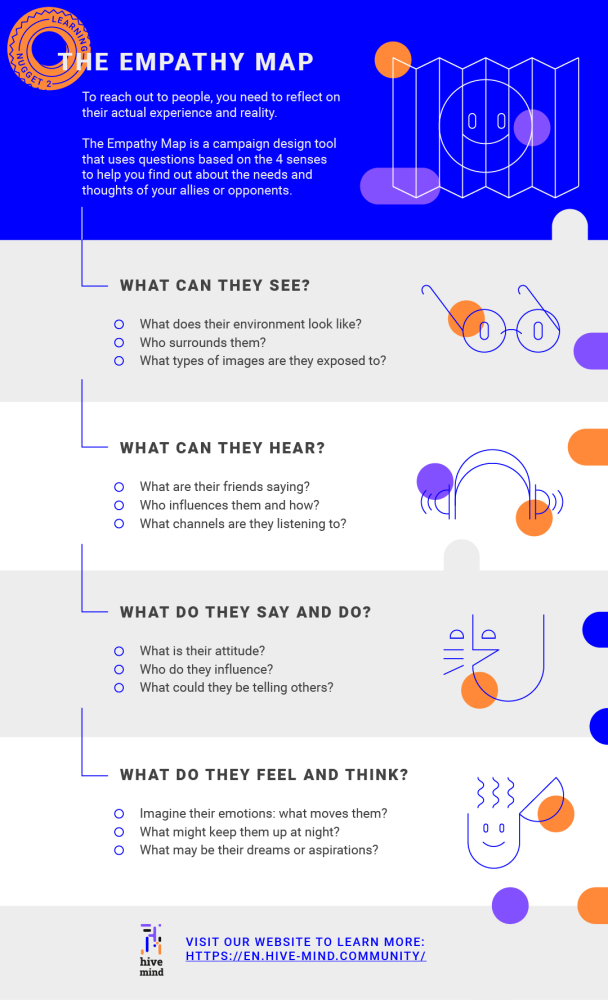Test Your Assumptions
It is important to get out of your bubble and find out directly from the people you want to engage with what they think about the issue you care about.
It is often easy to do this with people who agree with us, with whom we share values or perspectives. But it is even more important to understand people who may not agree with our stance on an issue. This will help you gain a brand new perspective on the world and will eventually lead to new ideas and solutions to the problem you are trying to tackle. So, discover what it is that you don’t know yet. Look for different perspectives. Challenge assumptions and conventional wisdom.
Connect with People
There are more people who want the change the same things that you’re striving for, but to involve them, you need to adjust your campaign, so that it is something they can align themselves with.
You need to connect at a personal level with the people you want to engage. To do that you need to understand them better, look closer at their reality, notice what and who surrounds them, observe what they are exposed to, what are their attitudes to life and what are their true aspirations or dreams.
With this insight, you will be able to create the Empathy Map to get a “sense” of how people think, feel and act about the problem you’re addressing.
The Empathy Map
The Empathy Map helps you visualize attitudes and behaviors of others by looking closer at their everyday experience.
Try to find out what they see, hear, say, or feel and you will get a better understanding of their needs and values.
What can they see? What does their environment look like? What and who surrounds them? Who are their friends? What types of images are they exposed to? What problems do they encounter?
What can they hear? What are their friends saying? Who influences them and how? What channels are they listening to?
What do they say or do? What is their attitude? Who do they influence? What could they be telling others?
What do they feel? What is really important to them that they might not say out loud in public? Imagine their emotions, what moves them? What might keep them up at night? Try to describe their dreams and aspirations.
This exercise will help you enter the world of the target group you want to approach and create solutions that will be valuable from their point of view.
To learn more about the tools for human-centered action and campaign design register for our free, self-paced course: “Online Campaigning – Advanced Course: Part Two” today!
 Like what you've just read? Here's a downloadable infographic summarising the key points:
Like what you've just read? Here's a downloadable infographic summarising the key points:
